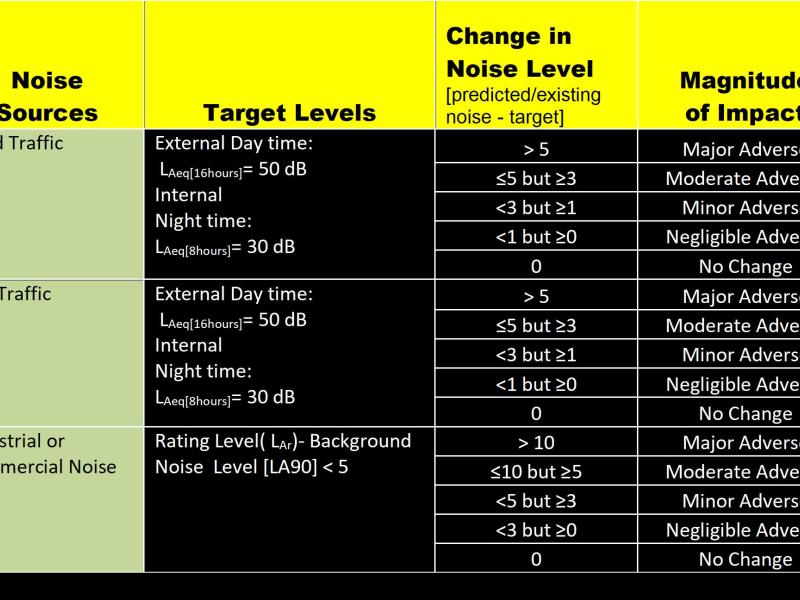Introduction
This guidance has been developed in response to Planning Advice Note (PAN) 1/2011 and should be read in conjunction with this document and the accompanying Technical Advice Note (TAN). It takes into account current policy in relation to planning and noise and provides guidance on undertaking noise assessments which may be required for any potential development in determining planning applications.
Where noise is a consideration in a planning application, planning officers consult with the area Environmental Health Officer (EHO). The EHO will advise whether a noise impact assessment (NIA) is required and review any noise information submitted by the applicant. The EHO will need to consider whether the information provided is sufficient to accurately assess the noise impact of the proposed development.
Pre-planning discussions with the EHO are very useful for determining the risk of noise being a significant consideration and identifying the supporting information and detail on noise likely to be required. This can save delays in the planning process.
When noise should be considered in the planning process
There are two types of development for which noise impact assessments will be required:
- Proposed Noise Generating Development (NGD) where noise is brought to people
- Proposed Noise Sensitive Development (NSD) where people are brought to existing noise.
Where it is not possible to separate noisy and noise-sensitive land uses, developers will have to incorporate good acoustic design and a sensitive approach to any new development proposals.
Where areas already have an unacceptable noise level it may not be possible to mitigate the adverse effects of noise. In such circumstances, noise-sensitive development may not be appropriate. In some cases, there is a need to protect existing commerce and industry from complaints from residents of new housing developments.
Noise Policy
Scottish Government policy on noise
The Environmental Noise (Scotland) Regulations 2006 required the production of strategic noise maps for large urban areas, transport corridors, and large airports within Scotland. From these strategic maps, action plans were drawn up which identified areas where residents were likely to be exposed to the highest noise levels.
These areas are known as Noise Management Areas (NMAs). These action plans also identified areas where individuals were likely to experience relatively low levels of noise, known as Quiet Areas (QAs).
The Scottish Government Action Plans aim to identify noise abatement measures designed to manage avoid, prevent, or reduce the harmful effects of noise exposure in NMAs and to maintain and protect environmental noise quality in QAs.
Council policy and guidelines
Under planning legislation councils must produce a local plan, setting out their detailed policies and proposals for the use, development, protection, and improvement of land.
Like the Scottish Government's responsibilities, councils should ensure through the planning process that new development does not result in increasing numbers of people exposed to adverse noise impacts in both NMAs and QAs.
Noise Assessment and Methodology
Before undertaking an assessment, an agreement is required to be reached between developers and the council on all relevant noise-generating sources and noise-sensitive receptors (NSRs), methodology of assessment, and noise targets. These details should be confirmed in writing.
Where a NIA is required it must be undertaken by a suitably qualified and competent person. Noise reports need to be comprehensive and include enough information for the council to assess the likely noise impact of the proposed development. If enough detail is not provided in terms of the methodology and calculations then there could be a delay in the planning process. Usually, noise measurements will need to be taken to establish the noise environment at the site of the proposed development. Noise monitoring should be carried out in accordance with British Standard BS 7445-1:2003
Any assumptions used in the prediction of noise levels must be clearly stated in the noise report. The submitted report must also provide a sample calculation to demonstrate how the noise figures have been obtained. Detailed raw data must be made available on request.
Wind turbine noise is covered in separate guidance.
The following table outlines the relevant assessment methodology and target noise levels for the most common noise sources.
